A recent report suggests that at current prices, Bitcoin miners will consume an estimated 8.27 terawatt-hours per year. That might sound like a lot, but it’s actually less than an eighth of what U.S. data centers use, 1 and only about 0.21 percent of total U.S. consumption. It also compares favorably to the currencies and commodities that bitcoin could help replace: Global production of cash and coins consumes an estimated 11 terawatt-hours per year, while gold mining burns the equivalent of 132 terawatt-hours. And that doesn’t include armored trucks, bank vaults, security systems and such. So in the right context, bitcoin is positively green.
Get Started for FREE
Sign up with Facebook Sign up with X
I don't have a Facebook or a X account

 Your new post is loading... Your new post is loading...
Building a cryptocurrency miner that doubles as a heater is cool, but one inventor has taken the concept of mining to a whole new level. A creative Tesla owner managed to fit a legitimate mining rig inside the trunk of his shiny Model S.But here is the best part: all the electricity needed to keep the mining rig running is coming from Tesla’s free Superchargers – or so the inventor says. The quirky setup went viral after the inventor took to Facebook group Tesla Owners Worldwide to share images of the Model S-fitted miner.
Philippe J DEWOST's insight:
Model S, meet AntMiner
Bitcoin is a system with many strict rules but without any rulers. This is made possible because the rules are enforced by each and every user of the system. Changing the existing rules is nearly impossible, but new rules can be added if consensus is achieved. The enforcement of rules without rulers may perhaps be the biggest innovation behind bitcoin. But this doesn't mean that no one is trying to become the ruler… For this reason, the users of bitcoin must defend their position as the rule enforcing part of the ecosystem. Rules-without-rulers is a feature that distinguishes bitcoin from all other monetary systems, and this feature alone may represent the main reason why bitcoin has obtained value in the first place. Unfortunately, bitcoin is a bit difficult to understand and even more difficult to explain… - Miners are the supply. |

|
Scooped by
Philippe J DEWOST
October 16, 2017 1:20 PM
|
Russian President Vladimir Putin has officially stated that Russia will issue its own ‘CryptoRuble’ at a closed door meeting in Moscow, according to local news sources. The news broke through Minister of Communications Nikolay Nikiforov.
According to the official, the state issued cryptocurrency cannot be mined and will be issued and controlled and maintained only by the authorities. The CryptoRubles can be exchanged for regular Rubles at any time, though if the holder is unable to explain where the CryptoRubles came from, a 13 percent tax will be levied. The same tax will be applied to any earned difference between the price of the purchase of the token and the price of the sale. Nikiforov said:
“I confidently declare that we run CryptoRuble for one simple reason: if we do not, then after 2 months our neighbors in the EurAsEC will.”
Embracing and rejecting
While the announcement means that Russia will enter the cryptocurrency world, it is in no way an affirmation or legalization of Bitcoin or any other decentralized cryptocurrency. On the contrary, Putin quite recently called for a complete ban on all cryptocurrencies within Russia.
The statement from Putin seemed apparently to contradict the earlier commentsfrom other ministers who seemed pro-crypto, but only with regulations, as well as Putin’s recent meetings with Buterin and others. Now, with the issuance of the CryptoRuble, the apparent contradiction has been made clear.
Did Vitalik convince Vladimir ?
|
|
Scooped by
Marc Dangeard
October 1, 2017 9:32 AM
|
We are proud to announce the first (and though we’ll try to outdo ourselves, possibly the best ever) episode of SweetTalk — the Sweetbridge show featuring leading blockchain experts and futurists…

|
Scooped by
Philippe J DEWOST
September 21, 2017 3:28 PM
|

|
Scooped by
Philippe J DEWOST
September 12, 2017 3:12 AM
|

|
Scooped by
Philippe J DEWOST
September 8, 2017 12:22 AM
|

|
Scooped by
Philippe J DEWOST
August 11, 2017 5:16 PM
|
A Bitcoin company has finally attained the "unicorn" title, an honorific bestowed upon startups valued at more than $1 billion.
Coinbase, a brokerage that established itself as one of the biggest brands in a now-booming cryptocurrency market, has raised $100 million at a private valuation of $1.6 billion that includes the capital raised, the company tells Fortune. The venture capital firm Institutional Venture Partners led the round with participation by Spark Capital, Greylock Partners, Battery Ventures, Section 32, and Draper Associates.
Coinbase had for months been rumored to be raising around $100 million at a valuation of $1 billion or more, as the Wall Street Journal reported in June. That deal, its fourth, is now final.
In previous rounds, Coinbase had raised a total of $117 million at a private valuation approaching $500 million, as Fortune reported. That sum already made it one of the most well financed Bitcoin ventures around, next to Circle and 21.
Coinbase has been riding a wave of interest in cryptocurrencies in recent months. Virtual currency prices exploded this year with the resurgence of Bitcoin—now trading at more than $3,400 per Bitcoin, well above its previous 2013 highs in the $900 range—as well as the ascent of Ethereum, a rival cryptocurrency network that, for one thing, allows people mint and sell their own digital tokens.
Overall, the total market value for cryptocurrencies and tokens combined has soared to more than $120 billion from just under $20 billion at the beginning of the year. This exuberance has led many industry watchers to warn of a possible bubble.
Founded in 2012, Coinbase started as a Bitcoin wallet service that helped customers stash their digital wealth. The company later moved into the brokerage space, opening online exchanges where traders can swap or sell crypto coins.
This year has been a banner year for Coinbase. According to the company, it has facilitated the exchange of more than $25 billion in digital currency to date, five times more than the total sum it processed from its founding through the end of last year.
On Wednesday, Fidelity Investments, the asset manager, added the ability for customers to view the cryptocurrency holdings in their Coinbase accounts on its own website.
During the recent Bitcoin blockchain fork in which a faction of the network broke off and created a new currency, Bitcoin Cash, some customers blasted Coinbase for saying it did not intend immediately to support the new money. Eventually, Coinbase reversed course and agreed to allow users to access their potential Bitcoin Cash holdings at the start of next year.
Coinbase has also been battling an IRS inquiry in recent months that seeks information about cryptocurrency buyers and sellers for tax purposes. The agency most recently said it would exempt people from the probe who transacted less than $20,000 in digital currency.
These hiccups haven't slowed the company's pace. Coinbase said it would put the newly raised money toward bolstering its engineering and customer support teams, opening a New York office for its professional trading operations, and continuing to develop Toshi, an Ethereum-based messaging and wallet app that it debuted last year.
Coinbase isn't the only recent benefactor from crypto mania that has lately gripped the world. GV, the venture capital arm of Alphabet, formerly known as Google Ventures, recently led a $40 million funding round for Blockchain, a cryptocurrency wallet provider based in London. Other investment firms like Andreessen Horowitz, Union Square Ventures, and Sequoia have been backing so-called crypto hedge funds, like Polychain Capital and Metastable, that invest in digital tokens and cryptocurrencies too.
Finally a UniBitCorn ! Congratulations to @Coinbase

|
Scooped by
Philippe J DEWOST
June 9, 2017 12:43 AM
|
C'est un signal important pour l'écosystème de la technologie Blockchain. Après une levée d'amorçage de 600.000 euros il y a un an menée par Otium Venture, la jeune pousse Stratumn a annoncé jeudi avoir finalisé un tour de financement de 7 millions d'euros.
Au-delà du montant, cette opération est significative de part l'identité de ses participants : Open CNP, le programme de capital-risque du premier assureur-vie français, est le plus gros contributeur au tour de table avec Otium, aux côtés de Nasdaq, première bourse électronique du monde, et de Digital Currency Group, investisseur new-yorkais très actif dans le secteur de la blockchain. Ces grands acteurs de la finance ne s'en tiennent pas à apporter de l'argent, ils nouent aussi un partenariat stratégique avec Stratumn pour l'aider à déployer concrètement sa solution dans leurs différents marchés.
Graver des informations dans le marbre à moindre coût
La start-up française créée en 2015 par l'ingénieur californien Richard Caetano aide les entreprises à sécuriser et optimiser les échanges de données entre partenaires, clients et autorités régulatrices. Elle a pour ce faire développé une technologie baptisée « Proof of Process » qui allie la technologie de registre distribué de la Blockchain, permettant de certifier des informations à moindre coût, et la cryptographie pour assurer la confidentialité de ces informations aux yeux de tiers.
« La technologie blockchain promet de fiabiliser les processus et de fluidifier l'échange d'information dans des consortiums. Nous souhaitons en développer l'utilisation avec nos partenaires et les acteurs du secteur de l'assurance grâce à la technologie Proof of Process développée par Stratumn », déclare Magali Noé, Chief Digital Officer de CNP Assurances.
Doubler la taille de ses effectifs d'ici 2018
La solution de Stratumn peut de fait s'appliquer à toute problématique de place impliquant des échanges de données entre acteurs d'un même secteur. Durant les douze derniers mois, Stratumn a mené une dizaine de projets pour tester des cas d'usages avec de grandes entreprises comme CNP Assurances et Nasdaq mais aussi Thales, Bureau Veritas ou Bouygues immobiliers, chacun présents sur un de ses quatre marchés cibles (assurance, marchés financiers, énergie, supply chain). Cette levée de fonds doit permettre à la jeune pousse de doubler la taille de ses effectifs d'ici 2018, à 30 personnes, et de s'attaquer au marché américain d'ici la fin de l'année.
Après Ledger, c'est un deuxième membre du Consortium LaBChain qui réussit une très belle levée de fonds ; l'écosystème français devient enfin visible.

|
Scooped by
Philippe J DEWOST
June 2, 2017 6:29 AM
|

|
Scooped by
Philippe J DEWOST
May 30, 2017 2:37 AM
|
The Toyota Research Institute (TRI) has announced that it is exploring blockchain technology for use in the development of a new mobility ecosystem that could accelerate development of autonomous driving technology.
“Hundreds of billions of miles of human driving data may be needed to develop safe and reliable autonomous vehicles,” said Chris Ballinger, director of mobility services and chief financial officer at TRI. “Blockchains and distributed ledgers may enable pooling data from vehicle owners, fleet managers, and manufacturers to shorten the time for reaching this goal, thereby bringing forward the safety, efficiency and convenience benefits of autonomous driving technology.”
Also collaborating on this initiative are: MIT Media Lab; Berlin-based BigchainDB, which is building the data exchange for sharing driving and autonomous vehicle testing data; Oaken Innovations, based in Dallas and Toronto, which is developing an application for P2P car sharing, vehicle access and payments with a newly created mobility token; Commuterz, a startup from Israel, working with TRI on a P2P carpooling solution; Gem, from Los Angeles, working with Toyota Insurance Management Solutions (TIMS), Toyota’s joint venture telematics car insurance company; and Aioi Nissay Dowa Insurance Services, which is developing the usage-based insurance platform.
“I’m excited Toyota is spearheading this initiative that uses blockchain technology to create an open platform where users can control their driving data,” said Neha Narula, Director, Digital Currency Initiative at the MIT Media Lab. “Our hope is that other industry stakeholders will join this effort to bring safe and reliable autonomous vehicles one step closer to reality.”
TRI is also working with Toyota Financial Services in the United States for development of related financial tools.
Several automakers are exploring Blockchain, mostly for tracking spare parts all along the supply chain ; the Toyota way looks different and may equally be promising.

|
Scooped by
Philippe J DEWOST
May 24, 2017 11:08 AM
|

|
Scooped by
Philippe J DEWOST
December 6, 2017 4:14 AM
|

|
Scooped by
Philippe J DEWOST
November 14, 2017 4:27 AM
|
Professional services major Deloitte claims that over 26,000 new Blockchain technology-based projects were launched on the code repository GitHub in 2016. GitHub is a development platform that houses codes for more than 86,000 Blockchain programs, including large projects such as Bitcoin.
In its report titled “Evolution of Blockchain Technology: Insights from the GitHub Platform,” Deloitte claimed that the number of Blockchain projects by both organizations and individual users at the development platform in 2016 is the biggest so far.
By comparison, there are less than 15,000 initiatives that were launched in 2015. Meanwhile, in the first half of 2017, there were almost 25,000 projects that were recorded on the platform.
According to Deloitte, the majority of the projects, however, have become inactive in the long run and only eight percent are active so far.
"The stark reality of open-source projects is that most are abandoned or do not achieve meaningful scale. Unfortunately, Blockchain is not immune to this reality. Our analysis found that only eight percent of projects are active, which we define as being updated at least once in the last six months."
Of 26000 Blockchain projects launched in 2016, it seems 92% have been dropped and are now dead in water.
Many will shortcut and conclude it is/was a fad. My view is that we are now realizing Blockchain is way more complex than expected, yet with a way larger potential than anticipated.
Let"s continue exploring and investing !

|
Scooped by
Philippe J DEWOST
October 29, 2017 7:53 AM
|

|
Scooped by
Philippe J DEWOST
October 2, 2017 4:45 AM
|

|
Scooped by
Philippe J DEWOST
September 27, 2017 1:02 AM
|

|
Scooped by
Philippe J DEWOST
September 21, 2017 1:15 AM
|

|
Scooped by
Philippe J DEWOST
September 11, 2017 1:16 PM
|
Blockchain, the secure distributed ledger technology first created to track bitcoin ownership, has taken on a number of new roles in recent years tracking anything of value from diamonds to real estate deeds to contracts. The blockchain offers the promise of a trusted record that can reduce fraud. Some industry experts say that over the coming years, it could be used to control identity information in a more secure fashion.
As we have seen, just last week with the massive Equifax hack, our personal information is highly vulnerable in online databases in their current form. The fact is that whenever we have to identify ourselves, we are forced to present a variety of information to prove we are who we say we are, whether that’s to register for an online service, to cross a border or even prove you are old enough to drink at a bar.
The argument goes that if our identity were on the blockchain, it would give us more control over this information, and with proper applications allow us to present just the minimum amount of information a given party needs to identify us. That could be your date of birth at a bar, your credit score at a bank or a unique identifier to access an online service.
It’s unclear if the blockchain can be that identity panacea that some have suggested, but there are a range of opinions on the matter.
Yes, it’s happening
Of the experts we contacted, only one was fully enthusiastic about blockchain as an identity tool. Jerry Cuomo, IBM Fellow and VP of blockchain technologies, sees blockchain already having a big impact as people demand more control of their identities. He says that we are constantly being asked to share personal information to access places or information or to do business with companies — and that each of these actions puts us at risk for identity theft. He believes the solution to this problem could lie on the blockchain.
“Imagine a world where you are in direct control of your personal information; a world where you can limit and control how much information you share while retaining the ability to transact in the world. This is self-sovereign identity, and it is already here. Blockchain is the underlying technology paving the path to self-sovereign identity through decentralized networks. It ensures privacy and trust, where transactions are secure, authenticated and verifiable and endorsed by relevant, permissioned participants,” Cuomo explained. In fact , he says that he’s already seeing businesses and governments beginning to establish and use these networks to meet citizen demand and deliver the promise of self-sovereign identity.
No, probably not
It sounds pretty good to hear Cuomo describe it, yet not everyone is enthusiastic as he is, seeing many obstacles to using the blockchain for identity purposes. Steve Wilson, an analyst at Constellation Research, who has studied the blockchain extensively has serious reservations about it as an identity management system.
“Identity is not going to move to the blockchain in any big way (not as we know it). Blockchains were designed to solve problems quite different from identity management (IDM). We need to remember that the classic blockchain is an elaborate system that allows total strangers to nevertheless exchange real value reliably. It works without identity and without trust. So it’s simply illogical to think such a mechanism could have anything to offer identity,” Wilson explained.
He adds, “The public blockchains deliberately and proudly shirk third parties, but in most cases, your identity is nothing without a third party who vouches for you in some way. Blockchain is great for some things, but it’s not magic, and it just wasn’t designed for the IDM problem space.”
Eve Maler, who works at identity management firm ForgeRock, which landed an $88 million investment last week, also finds the possibility highly unlikely for a variety of practical reasons. “Identity will not move to the blockchain if this means personal data will be put on a public permissionless blockchain (distributed ledger technology in its purest form), as this is now widely considered bad practice,” she said.
She added, “The “distributed nodes” element of the technology is valuable for architectures where trust in a central authority is difficult or undesirable to establish, but can be challenging where it is desirable to record sensitive information because of the increased attack surface (every node has a copy of everything) and resulting increased privacy considerations.”
It depends
Then there are those who fall somewhere in the middle. They aren’t ready to write it off, but they see a lot of obstacles along the way to implementing it, or see it as a part of a broader ecosystem of identity tools, rather than a full replacement to what we have now.
Charles Race, president of worldwide field operations at cloud identity firm Okta, which went public this year, thinks it’s possible blockchain will emerge. He envisions a similar set of use cases as Cuomo, but sees a lot of obstacles that stand in the way of using the blockchain to implement identity management broadly moving forward.
“A trusted entity will need to establish some legal and enforceable rules and policies for how it all works, they’ll need to make it easy for the average person to use securely, and they’ll need to convince a critical mass of people and service providers to adopt and trust the ID — all while finding an economically viable business model. Some institutions are uniquely positioned to solve all of these chicken-and-egg issues at once and bring this big idea to life — first among them are our citizen-facing government agencies,” Race explained. But he adds, “The trouble with this idea is that a universal ID poses risks to privacy and hence [could] encounter significant political opposition.”
Andre Durand, CEO at Ping Identity, an identity management firm that was sold for a reported $600 million to Vista Equity Partners last year, says it’s not likely to happen as a full replacement over the next five years, but it could begin to play a role in identity. “What is much more likely is that the things Distributed Ledger Technology is uniquely designed for, keeping accurate records in a distributed system, will become part of the identity management ecosystem and help improve aspects of it,” he says.
Ian Glazer, an identity industry expert says it really about choosing the right tool for the job, but he doesn’t necessarily see there ever being one answer that fits every identity scenario including blockchain.
“To ask if identity will move to blockchain is not the right question. Better to ask will use cases emerge that blockchain-related technologies are uniquely qualified to solve. Likely there will be some. But just like relational databases, LDAP and object databases, no one storage/retrieval mechanism has proven to be the single “right” tool for the job,” Glazer told TechCrunch.
Like any emerging technology, there are going to be a range of opinions on its viability. Using the blockchain as an identity management system is no different. It will probably begin to take on some role over the next five years because the promise is just so great, but how extensive that will be depends on how the industry solves some of the outstanding issues.
Answering the "Who did What When (with Whom) ?" question in confidence makes no sense if the "Who" question is left open.

|
Scooped by
Philippe J DEWOST
August 29, 2017 4:53 AM
|
The ‘creator’ of Bitcoin, Satoshi Nakamoto, is the world’s most elusive billionaire. Very few people outside of the Department of Homeland Security know Satoshi’s real name. In fact, DHS will not publicly confirm that even THEY know the billionaire’s identity. Satoshi has taken great care to keep his identity secret employing the latest encryption and obfuscation methods in his communications. Despite these efforts (according to my source at the DHS) Satoshi Nakamoto gave investigators the only tool they needed to find him — his own words.
Using stylometry one is able to compare texts to determine authorship of a particular work. Throughout the years Satoshi wrote thousands of posts and emails and most of which are publicly available. According to my source, the NSA was able to the use the ‘writer invariant’ method of stylometry to compare Satoshi’s ‘known’ writings with trillions of writing samples from people across the globe. By taking Satoshi’s texts and finding the 50 most common words, the NSA was able to break down his text into 5,000 word chunks and analyse each to find the frequency of those 50 words. This would result in a unique 50-number identifier for each chunk. The NSA then placed each of these numbers into a 50-dimensional space and flatten them into a plane using principal components analysis. The result is a ‘fingerprint’ for anything written by Satoshi that could easily be compared to any other writing.
The NSA can actually identify anybody... with style

Using the trove of data collected any millisecond around the whole globe, the #NSA can actually identify anybody and remove any mask.

|
Scooped by
Philippe J DEWOST
July 21, 2017 4:15 AM
|
Nadia & myself were invited in Stuttgart for the 7th RBVC workshop that was focusing this year on Blockchain and AI. I delivered the opening keynote yesterday and recorded it in 360° thanks to a Giroptic IO camera. Here is the result, best experienced with the Youtube mobile app or any compatible VR headset.
This is probably the first immersive 360° VR Blockchain Keynote, as well as my very last one for @CaisseDesDepots

|
Scooped by
Philippe J DEWOST
June 7, 2017 10:12 AM
|
It will consist of both an Observatory and a Forum to gather opinions and to voice concerns around Blockchain and DLT. It will have the ambition to become an EU expertise hub to discuss forward-looking topics on blockchain and develop use cases of interest at EU level.
The purpose will be to inform and assist the European Commission in understanding what role – if any - European public authorities should play to encourage the development and up-take of these technologies and to formulate related policy recommendations.
To that end, the Observatory is expected to
- provide an up to date overview of relevant initiatives relying on Blockchain or Distributed Ledger Technologies around the world and
- follow-up closely the developments of this technology and the related challenges and opportunities for European industry, citizens and governments.
- develop expertise on transversal topics such as infrastructure, governance and validation mechanisms, smart contracts, regulatory and legal challenges, interoperability and standards,
- build and animate a platform for the European blockchain community
- explore possible use cases with a value added at EU level.
The estimated budget is 500.000€ over a period of 2 years. The call for tender will be published during Q2 2017 in TED eTendering.
Observation is an interesting first step, especially if it leads to exploration and then action ! There is an estimated need for €500 M in R&D across continental EU within the next 2-3 years, and a similar amount in Venture funding over the same time span.

|
Scooped by
Philippe J DEWOST
June 1, 2017 5:58 AM
|

|
Scooped by
Philippe J DEWOST
May 29, 2017 2:32 AM
|
This article features the slides shown during Consensus 2017's opening remarks on the 'State of Blockchain'.
CoinDesk Research authors a quarterly industry overview report that summarizes key trends, data and events in the public and enterprise blockchain sectors.
The full 'Q1 2017 State of Blockchain' report, which expands on much of the material presented below, will be published shortly after Consensus.
It's been an eventful 2017 so far in the blockchain space.
Public protocols have gained over $40bn in market cap, enterprise consortia have formed and flourished, and the push towards interoperability can be seen across the ecosystem.
Regulation has shifted the composition of global trading volume, the usage of the industry's own investment structure continues to gain steam, and the amount and quality of traditional financial and technology giants getting involved in blockchain has never been higher.
CoinDesk Research also recently tapped into the community to gain more intimate insights into the perception and sentiment around bitcoin and ethereum and garnered north of 1,100 responses.
Below, we highlight some of the largest takeaways from the presentation:
- Bitcoin averaged 287,000 transactions per day at fees averaging $0.62 each, leading 67% of the surveyed community to say they feel 'bad' about the current state of transaction fees and confirmation times
- More people now view bitcoin as a 'digital gold' than a 'digital currency' and 86% of the community believes ethereum can be used just as well as a medium exchange or payment method
- 47% believe we will see a contentious hard fork of bitcoin, and rather than preferring SegWit or a block-size increase, more individuals believe some combination of solutions is the best short-term scaling solution
- The majority of the community believes we will see the Lightning Network live on bitcoin, and both Raiden and proof-of-stake live on ethereum in 2018
- The overall state of bitcoin is nearly exactly split between positive and negative responses, while less than 5% of people responded negatively to the current state of ethereum
- Despite Hyperledger's multiple open-source frameworks, live proof of concepts, 130 plus member list and backing by the Linux Foundation, 87% of people have slight to no knowledge of the group
- Enterprise Ethereum Alliance launching in February was seen as the primary price driver of ether in Q1
Beyond Bitcoin's recent and insane and bumpy rally, some deeper insights back from the Consensus 2017 Conference


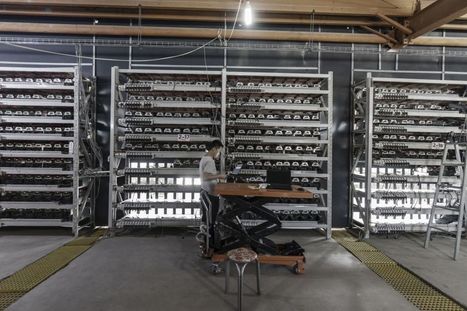

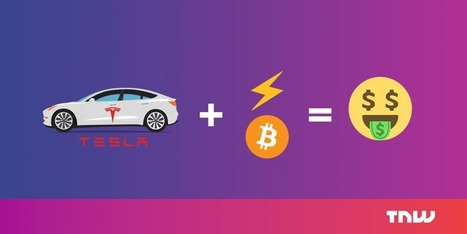


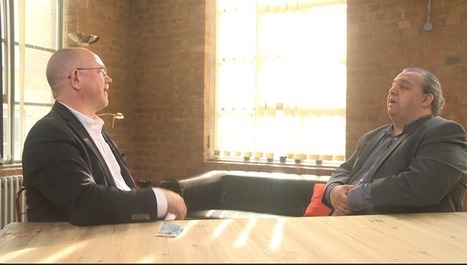

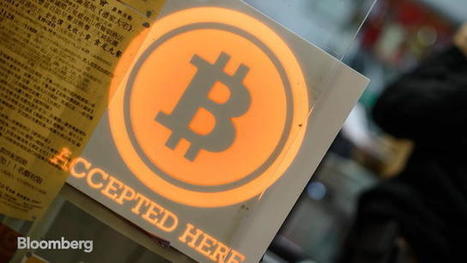
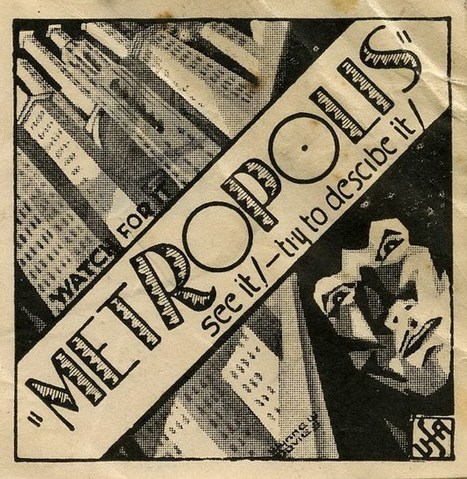






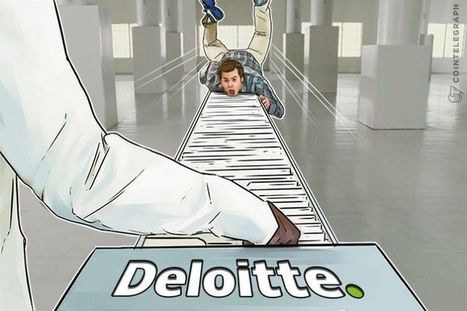





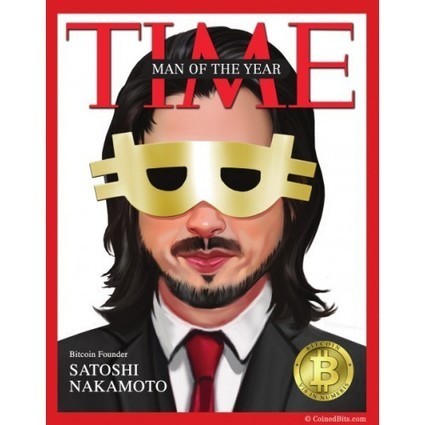








Bitcoin energy consumption, in context.
Interesting to read to form your opinion instead of relaying uninformed clickbait amplified by the #Kommentariat